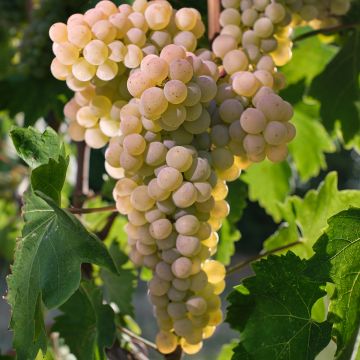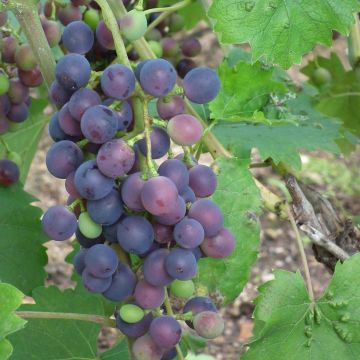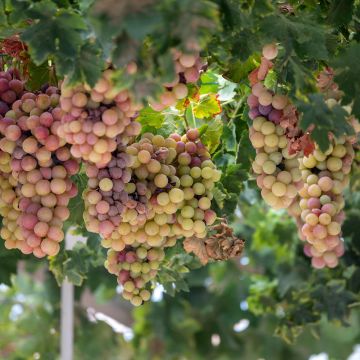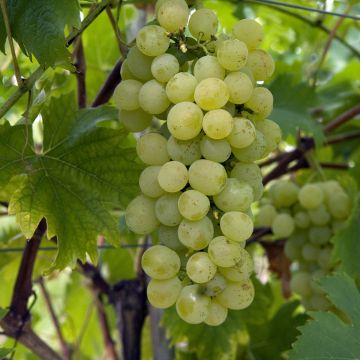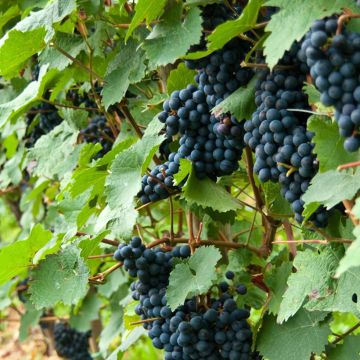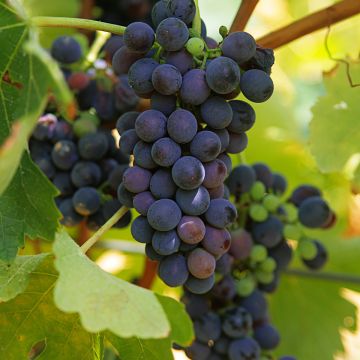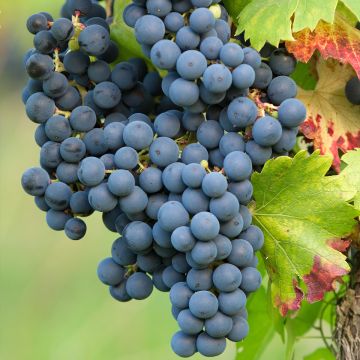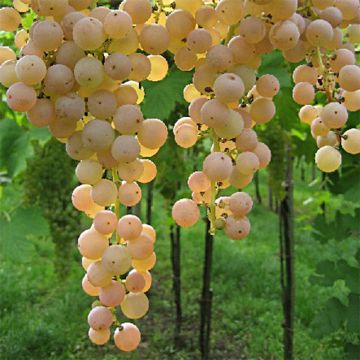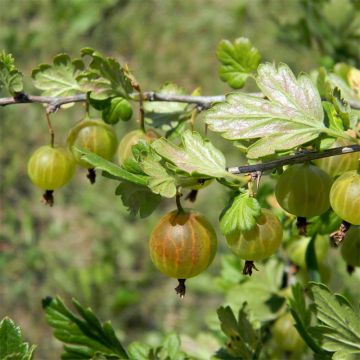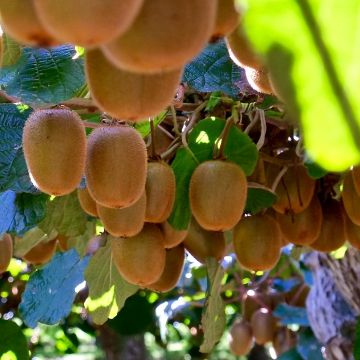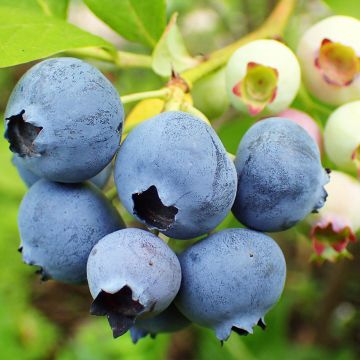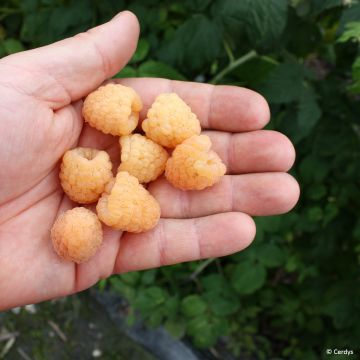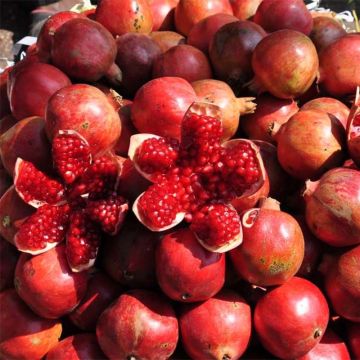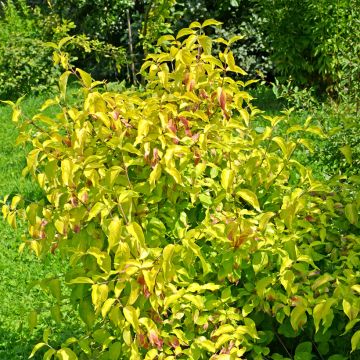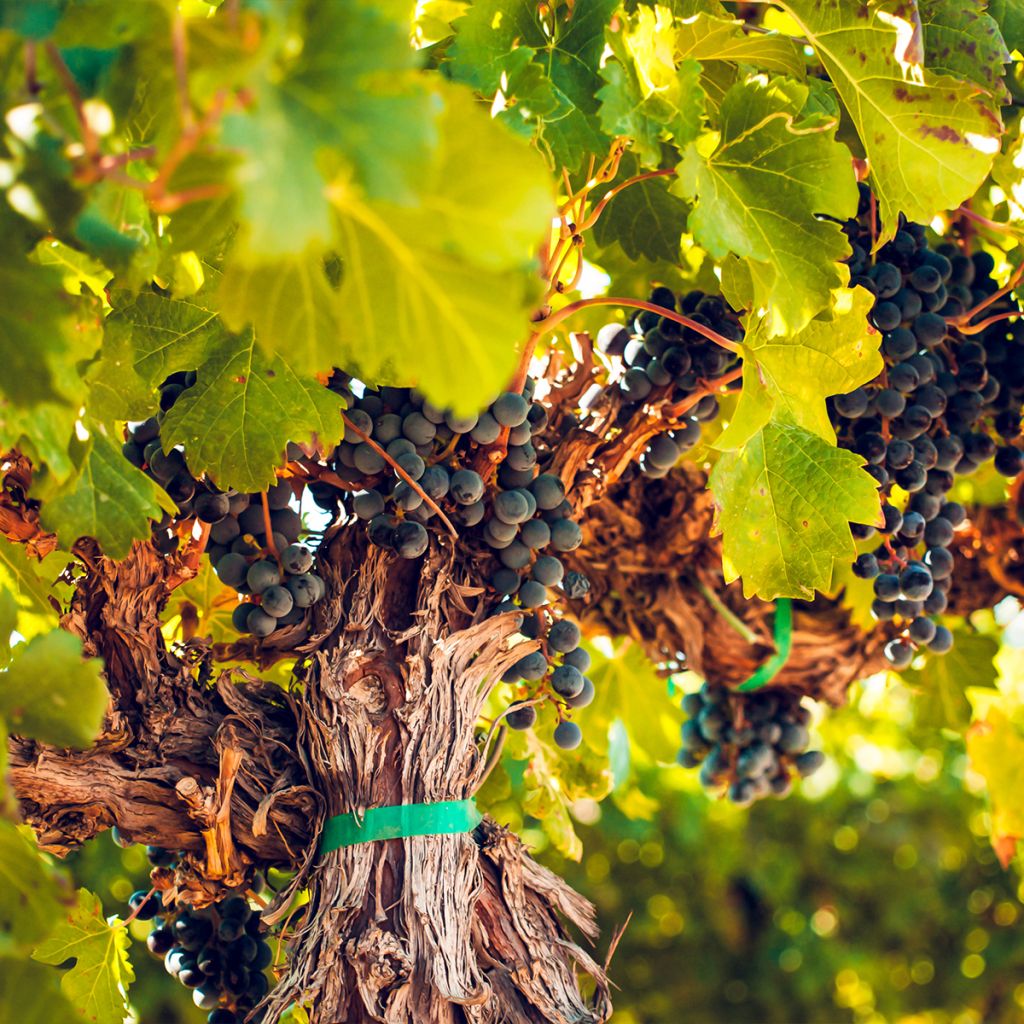

Vitis vinifera Petit Verdot - Grape vine
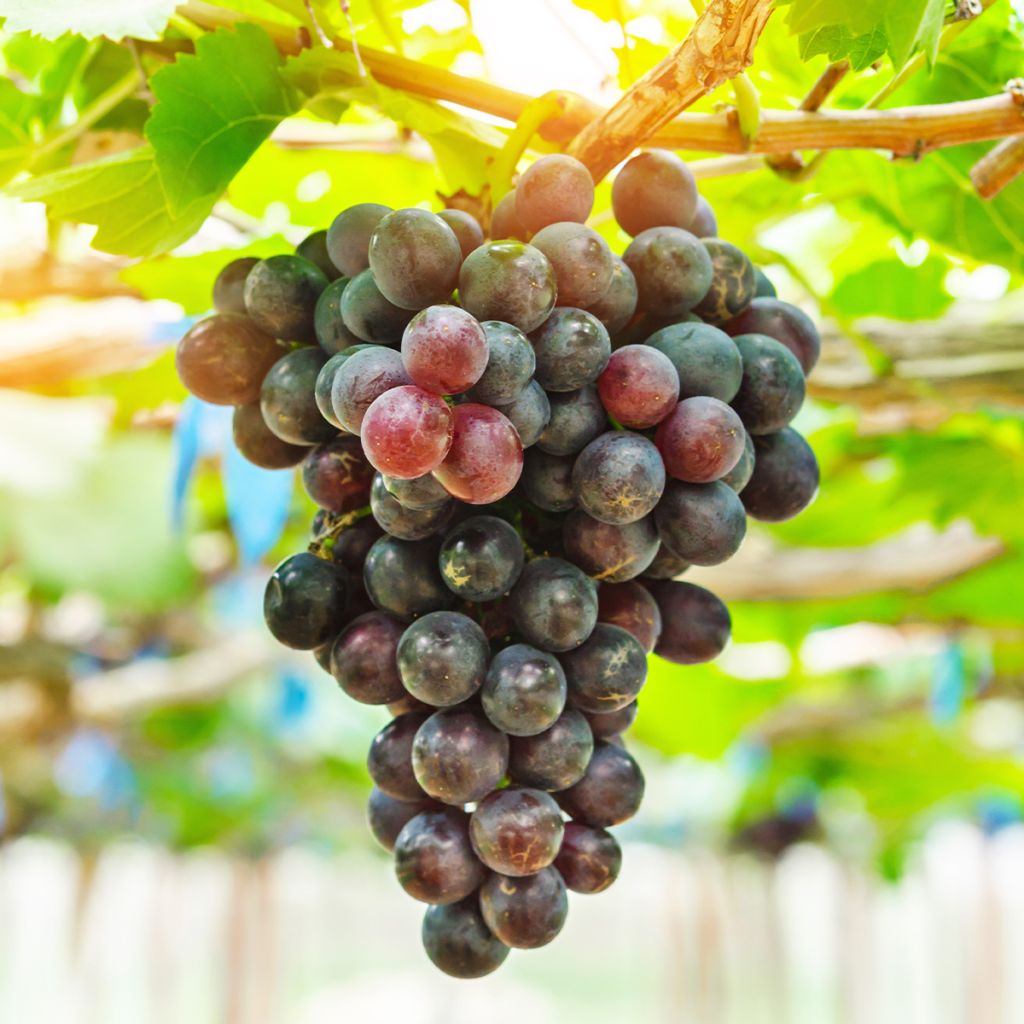

Vitis vinifera Petit Verdot - Grape vine
Vitis vinifera Petit Verdot - Grape vine
Vitis vinifera Petit Verdot
Common Grape Vine, European Grape, Wine Grape
Special offer!
Receive a €20 voucher for any order over €90 (excluding delivery costs, credit notes, and plastic-free options)!
1- Add your favorite plants to your cart.
2- Once you have reached €90, confirm your order (you can even choose the delivery date!).
3- As soon as your order is shipped, you will receive an email containing your voucher code, valid for 3 months (90 days).
Your voucher is unique and can only be used once, for any order with a minimum value of €20, excluding delivery costs.
Can be combined with other current offers, non-divisible and non-refundable.
Home or relay delivery (depending on size and destination)
Schedule delivery date,
and select date in basket
This plant carries a 6 months recovery warranty
More information
We guarantee the quality of our plants for a full growing cycle, and will replace at our expense any plant that fails to recover under normal climatic and planting conditions.
Description
The Petit Verdot grape is a very ancient variety of wine grape, originating from the southwest. It is vigorous and quite difficult to manage, as it grows in all directions. If left unpruned, it can reach a height of 4m (13ft), but it is better to prune it regularly. It requires hot summers and needs moisture at the root level to fruit well, which is why it has fallen out of fashion. Nevertheless, it is still found in small proportions in renowned appellations such as Margaux, Pauillac, Médoc, Saint-Estèphe... It has the advantage of being fairly resistant to diseases, but it is sensitive to mites and the European grapevine moth.
The wine grape (Vitis vinifera) grew wild over 5000 years ago in North and Central America, Europe, and Central and Eastern Asia. The subspecies sylvestris still exists, and it is a climbing vine that grows on the edge of forests and can reach great heights in trees. The current varieties belong to the subspecies vinifera (although there are other cultivated species, but they are very minor).
Petit Verdot is one of the historical vines that dates back to at least the 18th century. This variety is believed to originate from the southwest, although it seems to be directly descended from Tressot Noir, a grape variety from Yonne. It is also planted in Bulgarian, Spanish, Italian, Portuguese, and Maltese vineyards, which shows its preference for hot climates. It is named after its ability to stay green longer than other grape varieties, as it needs warmth to fully ripen...
Petit Verdot is quite recognizable during bud break due to its cottony appearance, and also by its young yellowish leaves and tendrils. When mature, the leaves take on a heart-shaped form with 3 lobes and are a dark matte green. It is vigorous and trailing, with branches that tend to grow horizontally and in all directions. They are quite weak at their base and tend to break easily in the wind, so they need to be carefully trained. The early summer flowering produces small to medium-sized, cylindrical clusters made up of small bluish-black, round berries. This grape is used in small proportions in many appellations, giving them a tannic and structured character, making them suitable for ageing. It ripens late, almost 4 weeks after Chasselas, a benchmark grape, even though it only buds 4 days after it, which speaks volumes about its heat requirements. That is why the harvest can be compromised in mediocre summers, while it thrives in hot countries like Spain, as long as there is enough moisture available, as it is sensitive to drought.
Petit Verdot grapes are not the easiest to cultivate, due to their unruly growth and their high heat requirements. However, they are less susceptible to various vine diseases such as downy mildew, powdery mildew, and botrytis. Because of their heat requirements, it is advisable to train them against a well-exposed stone wall to maximize sun exposure. In general, grapes are rich in vitamin B, a source of fibre and manganese, and they are also rich in antioxidants. They are believed to play a role in preventing cardiovascular diseases, and above all, they are a healthy, natural, and delicious dessert. To enjoy different flavours, plant a white grape variety like Fragola Bianca alongside it, with its exceptional aroma. Or try the Navaho Thornless Blackberry, which can be enjoyed fresh or cooked in desserts or jellies.
Report an error about the product description
Vitis vinifera Petit Verdot - Grape vine in pictures
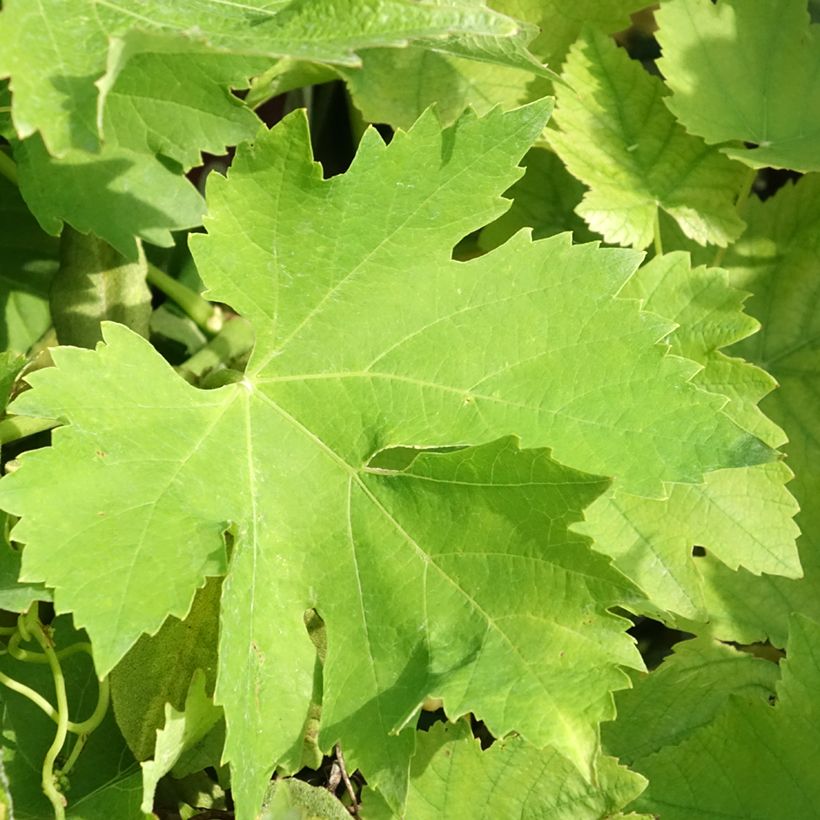

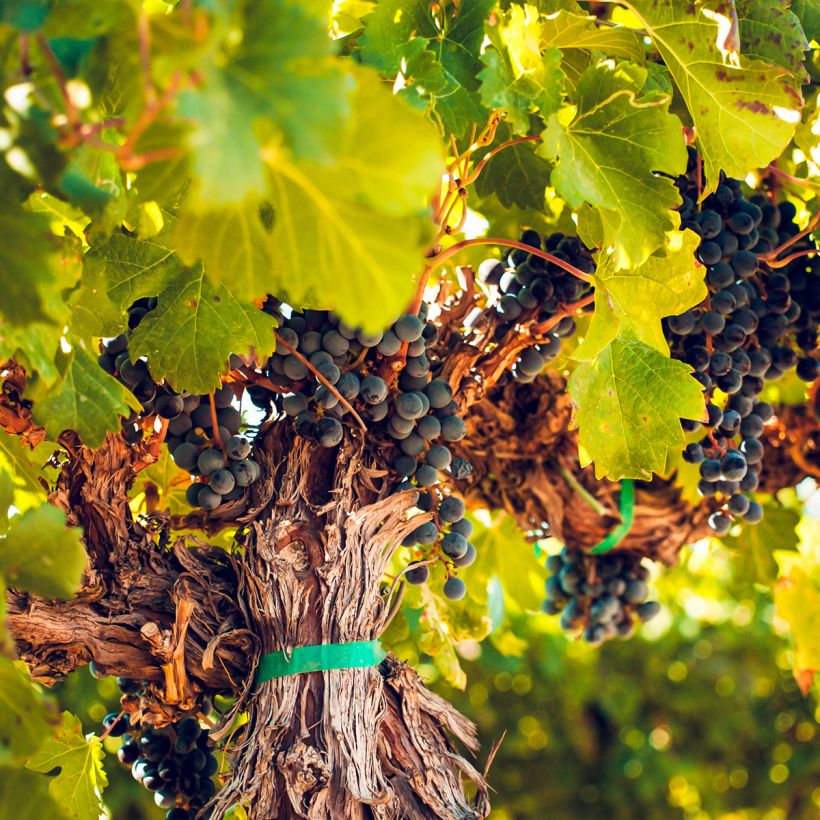

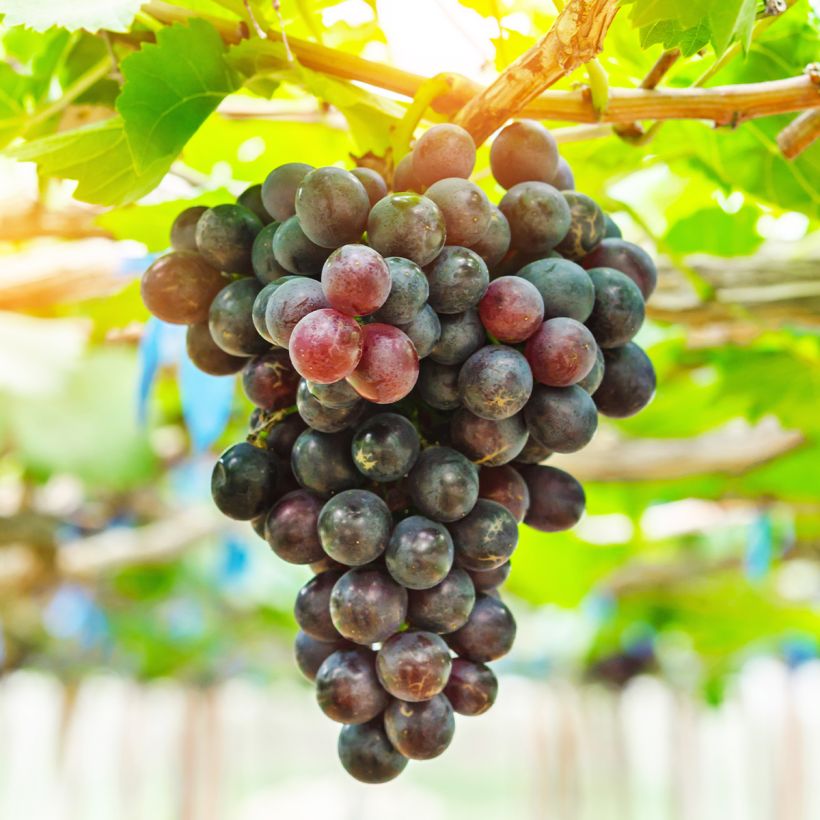

Plant habit
Fruit
Flowering
Foliage
Botanical data
Vitis
vinifera
Petit Verdot
Vitaceae
Common Grape Vine, European Grape, Wine Grape
Cultivar or hybrid
Other Grapevines
View all →Planting and care
Since the ravages of the phylloxera at the end of the 19th century, the vine is now grafted onto different rootstocks, resistant to this disease and adapted to different types of soil. These rootstocks come from American varieties, naturally resistant to this formidable parasite, itself of American origin.
Plant the Petit Verdot vine in autumn, in a deep, well-drained soil, even stony, clayey and chalky, the vine is not very demanding in terms of the chemical nature of the soil. It is capable of adjusting to moderately acidic soil (up to pH 6 approximately, below this there are assimilation blockages of certain trace elements), neutral and calcareous up to pH 8.5 approximately (it is the excess of active limestone that is detrimental).
Install it in a sunny exposure, sheltered from strong, cold and dry winds. This variety can withstand winter frosts down to -18°C (-0.4°F), or even lower in well-drained soil, but it is sensitive to spring frosts. Incorporate into the planting soil 3 or 4 handfuls of fertiliser for fruit trees and 2 kg of composted manure for each vine. Be careful, the roots should not be in contact with the manure. Petit Verdot is a variety that needs a lot of heat, but also good soil moisture in season. After planting, prune above 2 big buds (buds) to obtain two shoots. Keep the most vigorous one and tie it to a stake. This will be followed by training pruning.
The vine does not require regular fertiliser application for good yield, on the contrary. In overly rich soil, vegetation (leaves) will develop to the detriment of fruiting. Enrich the soil with potash, crushed horn or iron chelate, only every 2-3 years.
This vine is fairly resistant to classical diseases, powdery mildew, downy mildew and botrytis. On the other hand, it is susceptible to attacks from pests, notably mites (these tiny spiders often collectively called "red spiders") and grape worms (Eudémis).
Planting period
Intended location
Care
This item has not been reviewed yet - be the first to leave a review about it.
Similar products
Haven't found what you were looking for?
Hardiness is the lowest winter temperature a plant can endure without suffering serious damage or even dying. However, hardiness is affected by location (a sheltered area, such as a patio), protection (winter cover) and soil type (hardiness is improved by well-drained soil).

Photo Sharing Terms & Conditions
In order to encourage gardeners to interact and share their experiences, Promesse de fleurs offers various media enabling content to be uploaded onto its Site - in particular via the ‘Photo sharing’ module.
The User agrees to refrain from:
- Posting any content that is illegal, prejudicial, insulting, racist, inciteful to hatred, revisionist, contrary to public decency, that infringes on privacy or on the privacy rights of third parties, in particular the publicity rights of persons and goods, intellectual property rights, or the right to privacy.
- Submitting content on behalf of a third party;
- Impersonate the identity of a third party and/or publish any personal information about a third party;
In general, the User undertakes to refrain from any unethical behaviour.
All Content (in particular text, comments, files, images, photos, videos, creative works, etc.), which may be subject to property or intellectual property rights, image or other private rights, shall remain the property of the User, subject to the limited rights granted by the terms of the licence granted by Promesse de fleurs as stated below. Users are at liberty to publish or not to publish such Content on the Site, notably via the ‘Photo Sharing’ facility, and accept that this Content shall be made public and freely accessible, notably on the Internet.
Users further acknowledge, undertake to have ,and guarantee that they hold all necessary rights and permissions to publish such material on the Site, in particular with regard to the legislation in force pertaining to any privacy, property, intellectual property, image, or contractual rights, or rights of any other nature. By publishing such Content on the Site, Users acknowledge accepting full liability as publishers of the Content within the meaning of the law, and grant Promesse de fleurs, free of charge, an inclusive, worldwide licence for the said Content for the entire duration of its publication, including all reproduction, representation, up/downloading, displaying, performing, transmission, and storage rights.
Users also grant permission for their name to be linked to the Content and accept that this link may not always be made available.
By engaging in posting material, Users consent to their Content becoming automatically accessible on the Internet, in particular on other sites and/or blogs and/or web pages of the Promesse de fleurs site, including in particular social pages and the Promesse de fleurs catalogue.
Users may secure the removal of entrusted content free of charge by issuing a simple request via our contact form.
The flowering period indicated on our website applies to countries and regions located in USDA zone 8 (France, the United Kingdom, Ireland, the Netherlands, etc.)
It will vary according to where you live:
- In zones 9 to 10 (Italy, Spain, Greece, etc.), flowering will occur about 2 to 4 weeks earlier.
- In zones 6 to 7 (Germany, Poland, Slovenia, and lower mountainous regions), flowering will be delayed by 2 to 3 weeks.
- In zone 5 (Central Europe, Scandinavia), blooming will be delayed by 3 to 5 weeks.
In temperate climates, pruning of spring-flowering shrubs (forsythia, spireas, etc.) should be done just after flowering.
Pruning of summer-flowering shrubs (Indian Lilac, Perovskia, etc.) can be done in winter or spring.
In cold regions as well as with frost-sensitive plants, avoid pruning too early when severe frosts may still occur.
The planting period indicated on our website applies to countries and regions located in USDA zone 8 (France, United Kingdom, Ireland, Netherlands).
It will vary according to where you live:
- In Mediterranean zones (Marseille, Madrid, Milan, etc.), autumn and winter are the best planting periods.
- In continental zones (Strasbourg, Munich, Vienna, etc.), delay planting by 2 to 3 weeks in spring and bring it forward by 2 to 4 weeks in autumn.
- In mountainous regions (the Alps, Pyrenees, Carpathians, etc.), it is best to plant in late spring (May-June) or late summer (August-September).
The harvesting period indicated on our website applies to countries and regions in USDA zone 8 (France, England, Ireland, the Netherlands).
In colder areas (Scandinavia, Poland, Austria...) fruit and vegetable harvests are likely to be delayed by 3-4 weeks.
In warmer areas (Italy, Spain, Greece, etc.), harvesting will probably take place earlier, depending on weather conditions.
The sowing periods indicated on our website apply to countries and regions within USDA Zone 8 (France, UK, Ireland, Netherlands).
In colder areas (Scandinavia, Poland, Austria...), delay any outdoor sowing by 3-4 weeks, or sow under glass.
In warmer climes (Italy, Spain, Greece, etc.), bring outdoor sowing forward by a few weeks.






























